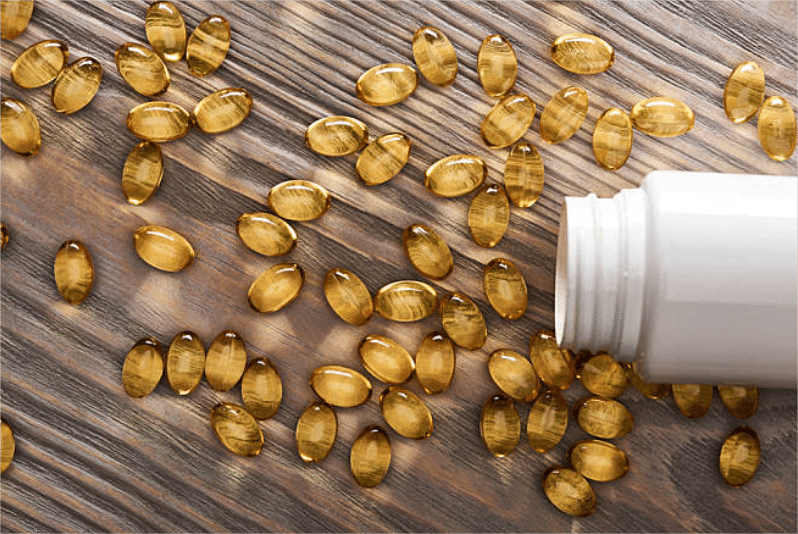Evening Primrose Oil (EPO) and L-Aspartic Acid are both popular supplements, but they differ significantly in their composition, health benefits, and uses. While EPO is primarily known for its role in skin and hormonal health, L-Aspartic Acid is an amino acid that plays a vital role in energy production and brain function. This article explores their key differences and similarities, helping to better understand when and why to use each.

-
What is Evening Primrose Oil?
Evening Primrose Oil is a natural oil derived from the seeds of the Oenothera biennis plant, which is native to North America. The oil is rich in essential fatty acids, particularly gamma-linolenic acid (GLA), an omega-6 fatty acid. GLA is an important component for reducing inflammation, supporting cellular health, and balancing hormones.
EPO is most commonly taken in capsule or liquid form and is used for a variety of health concerns, including skin disorders, hormonal imbalances, and inflammation-related issues. It’s especially popular for its ability to support skin health and relieve symptoms associated with PMS (premenstrual syndrome) and menopause.
-
What is L-Aspartic Acid?
L-Aspartic Acid is a non-essential amino acid, which means the body can produce it naturally. It plays a critical role in several metabolic processes, including the production of energy. It is also involved in the synthesis of other amino acids and neurotransmitters, which are important for brain function and mood regulation. L-Aspartic Acid is found in many protein-rich foods such as meat, eggs, and legumes, and is often used as a supplement for enhancing physical performance, brain function, and energy levels.
L-Aspartic Acid is typically available in powder or capsule form and is often used by athletes and those looking to support overall metabolic health and cognitive function.
-
Key Benefits of Evening Primrose Oil
Evening Primrose Oil offers several health benefits, largely due to its high concentration of GLA, a potent anti-inflammatory fatty acid. Some of its key benefits include:
– Skin Health: EPO is widely used to support skin health. It has been shown to help with conditions like eczema, acne, and psoriasis by reducing inflammation and promoting healthy skin cells.
– Hormonal Balance: One of the most well-known uses of EPO is for balancing hormones. It is particularly helpful for alleviating symptoms of PMS and menopause, including mood swings, bloating, and hot flashes. The GLA in EPO helps regulate the production of prostaglandins, which are hormone-like compounds that influence various bodily functions.
– Joint Health: Thanks to its anti-inflammatory properties, EPO can help reduce the pain and stiffness associated with rheumatoid arthritis and other inflammatory joint conditions.
– Heart Health: Some studies suggest that EPO may help reduce high blood pressure and lower cholesterol levels, promoting cardiovascular health.
-
Key Benefits of L-Aspartic Acid
L-Aspartic Acid plays a vital role in energy production and the functioning of various systems in the body. Here are some of its key benefits:
– Energy Production: L-Aspartic Acid is involved in the Krebs cycle, a process in which the body converts carbohydrates into usable energy. As such, it helps provide the body with sustained energy, especially during physical exertion.
– Cognitive Function: L-Aspartic Acid has been shown to support brain function by influencing the production of neurotransmitters. This can enhance mood, mental clarity, and focus, making it a useful supplement for people looking to boost cognitive performance.
– Athletic Performance: Because of its role in energy metabolism, L-Aspartic Acid is often used by athletes to improve endurance, reduce fatigue, and speed up recovery after exercise.
– Support for Muscle Growth: As an amino acid, L-Aspartic Acid helps in protein synthesis, which is crucial for muscle repair and growth. It is commonly used by bodybuilders and those engaged in strength training to support muscle development.
-
How They Differ in Uses
The main difference between Evening Primrose Oil and L-Aspartic Acid lies in their applications:
– Evening Primrose Oil is most often used for its anti-inflammatory and hormone-regulating properties. It is especially beneficial for individuals dealing with skin conditions, hormonal imbalances (like PMS or menopause), or joint inflammation. EPO is primarily used for skin and overall wellness, focusing on improving the body’s ability to manage inflammation and hormonal fluctuations.
– L-Aspartic Acid, on the other hand, is more commonly used to support energy levels and brain function. It is ideal for people looking to boost physical performance, enhance cognitive function, or improve muscle growth. L-Aspartic Acid plays a significant role in energy production and is particularly useful for athletes or anyone looking to sustain high energy throughout the day.
-
Safety and Side Effects
Both Evening Primrose Oil and L-Aspartic Acid are generally considered safe when used appropriately, but they can have side effects in some individuals:
– Evening Primrose Oil may cause mild side effects such as stomach upset, nausea, or headaches. It can also increase the risk of bleeding, so people taking blood-thinning medications should use caution. Pregnant women should consult a doctor before using EPO, as it may induce labor in large doses.
– L-Aspartic Acid is generally well tolerated, but high doses may cause gastrointestinal issues such as nausea, diarrhea, or stomach cramps. There are no major long-term side effects reported, but people with certain medical conditions, like kidney disease, should consult a healthcare provider before starting supplementation.
-
Conclusion
Evening Primrose Oil and L-Aspartic Acid serve very different purposes and can complement each other depending on your health goals. Evening Primrose Oil is best suited for those looking to manage hormonal imbalances, support skin health, or reduce inflammation. It is commonly used by individuals with skin conditions, those going through PMS or menopause, or anyone seeking anti-inflammatory benefits.



